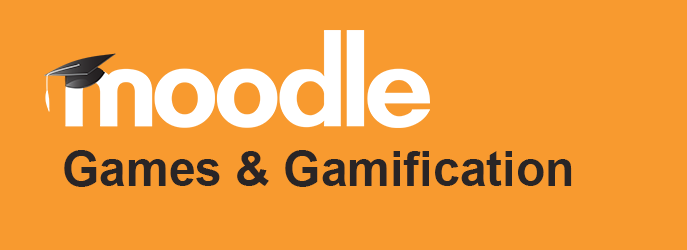
Gamification in Moodle is one of the most effective ways to engage and motivate learners by using game mechanics and games. Let us quickly clarify the difference between the two. Game mechanics are common gaming tactics used to ignite competition and the desire for learners to ‘win’. Games, on the other hand, are tangible games themselves, such as hangman or crosswords. The Moodle Games Plugin allows you to utilize glossaries, short answer questions, multiple choice questions, and true/false questions to quiz learners with the following available games:
- Hangman
- Crossword
- Cryptex
- Millionaire
- Sudoku
- The Hidden Picture
- Snakes and Ladders
- Book with Questions
Popular gamification mechanics that instructional designers can make use of are:
Points
These are awarded to learners to motivate them throughout courses and activities. They can be used to drive desired behaviours, signify status in a course, and even unlock new learning stages or rewards.
Challenges, Badges & Achievements
These help motivate learners to do more, innovate faster, and work smarter than others. Challenges that are a bit difficult and meaningful for your learners with visible recognition will motivate them to reach higher and work harder.
Leaderboards
These are essentially scoreboards that display progress and ranking of learners to help them gauge their performance against their peers. Rankings motivate learners to excel past their peers in addition to boosting repeat visits. The Moodle gamification plugin, Ranking Block makes this easy to implement by assigning points to activities completed in Moodle. Rankings are then displayed in a scoreboard block
Levels
Levels help learners understand when they have reached a milestone or accomplishment. Many also use levels as an opportunity to provide meaningful feedback and highlight areas for improvement.
Time-based Activities
Adding artificial time pressures, like countdowns or quizzes, can be used to motivate learners to work faster, as well as teach them to work better under pressure.
Continual and Immediate Feedback - Games are fun, but losing is not. In order for gamification to be successful, learners have to want to play the games, meaning that winning has to seem like a possibility. It is essential that users are given feedback when they lose - this not only helps solidify learning but also motivates learners when there is a clear direction for improvement.
Stories and Characters
Creating stories and characters around learning challenges will help to immerse learners in your eLearning course - if possible; this is a great tool to use with dry or dull course material.
Freedom to Fail
Giving learners the freedom to fail by giving them multiple lives, second chances, or alternative methods to succeed is an extremely engaging tactic, as it will keep learners motivated to work through a challenge for points or rewards.




